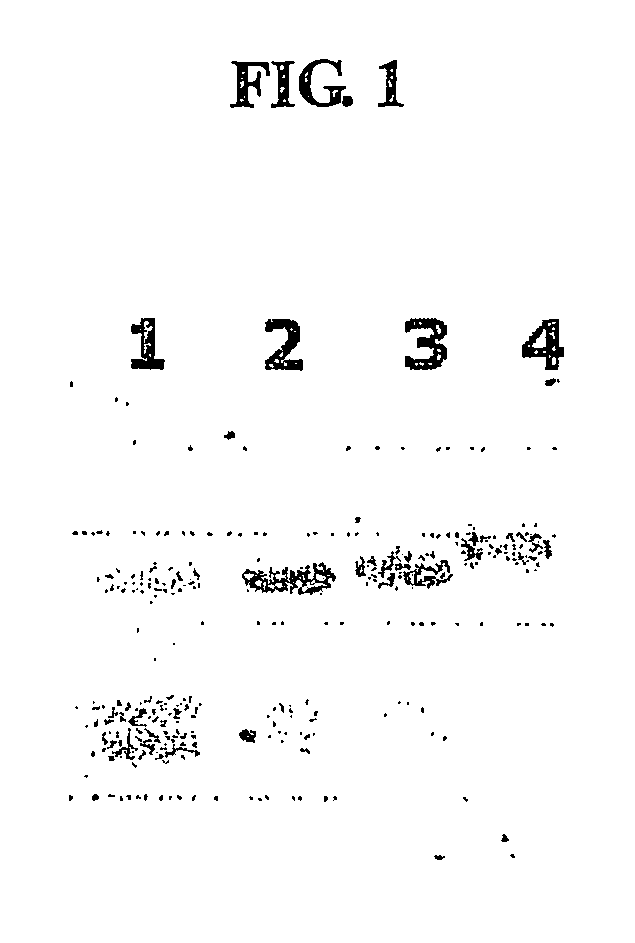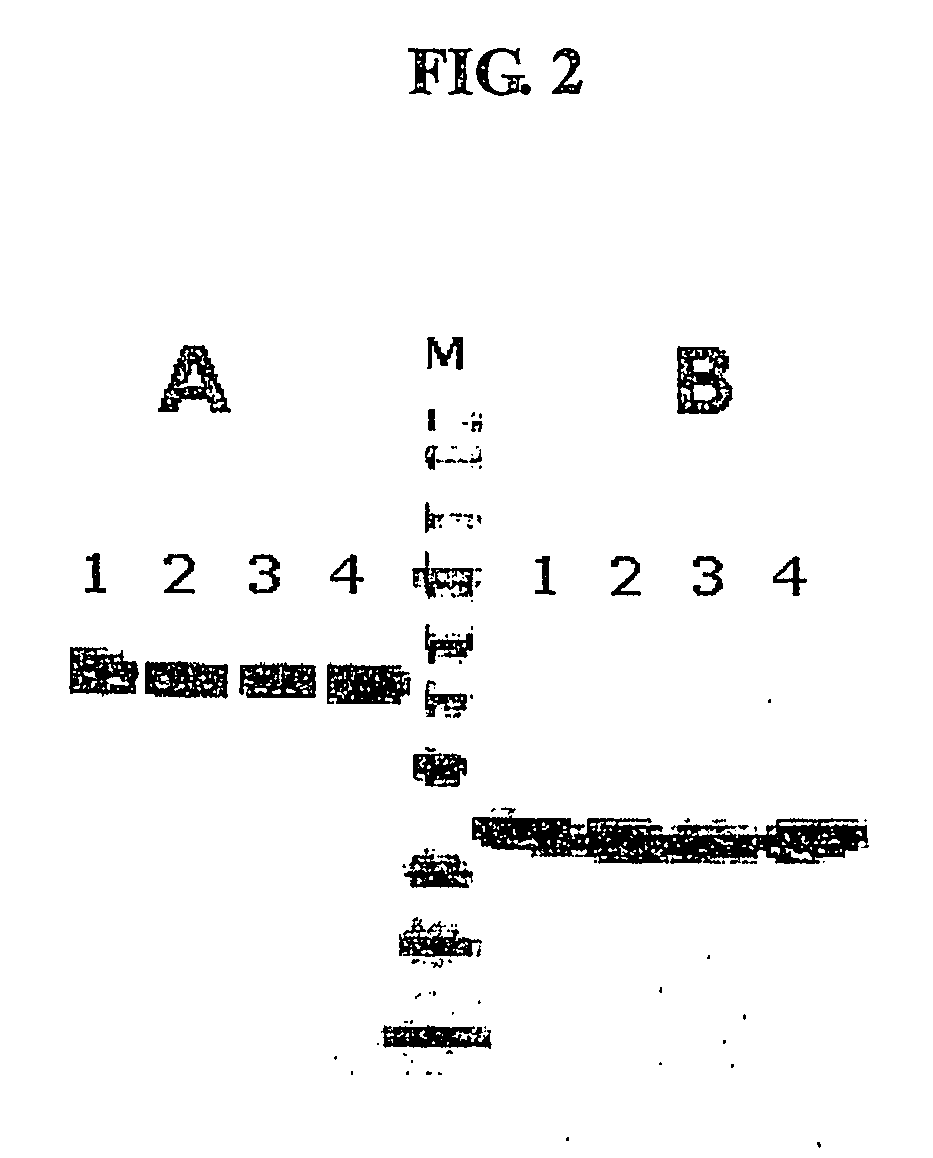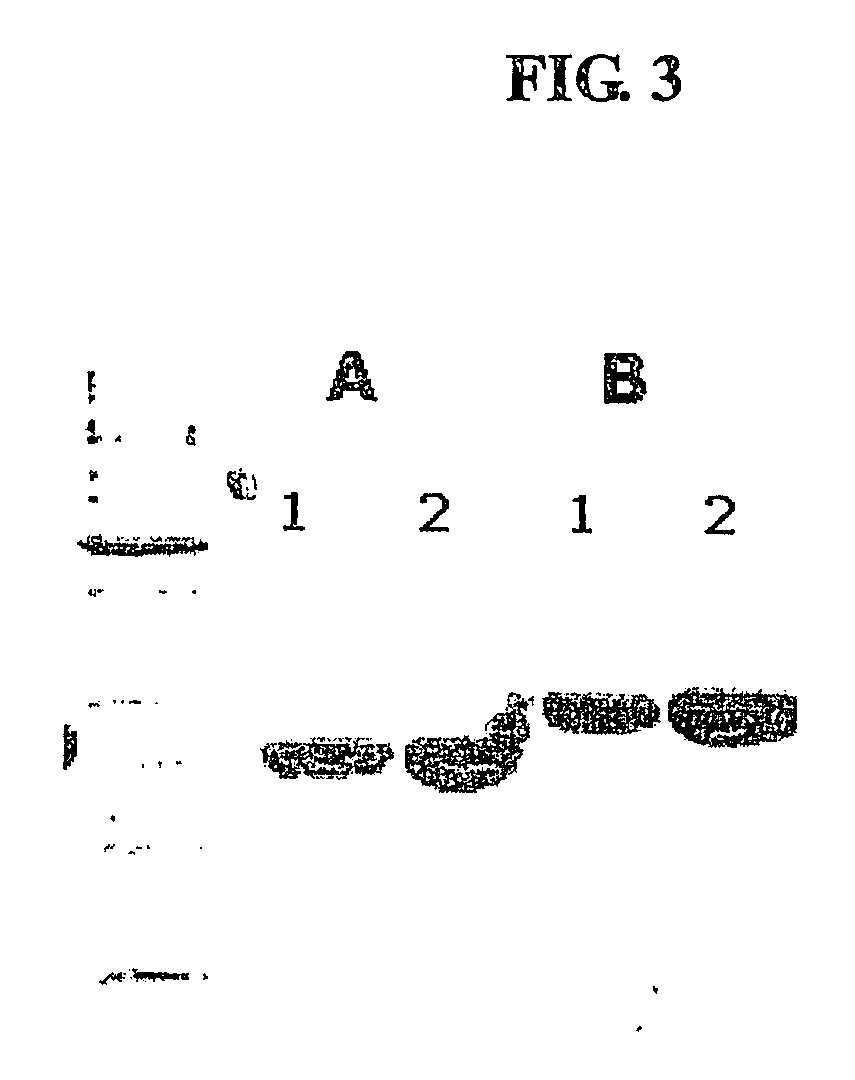Method for the mass production of immunoglobulin constant region
a technology of immunoglobulin and constant region, which is applied in the field of recombinant expression vectors, can solve the problems of protein drugs that are susceptible to denaturator or proteolytic degradation, difficult to sustain in vivo concentration and titer, and serum half-life of a target protein
- Summary
- Abstract
- Description
- Claims
- Application Information
AI Technical Summary
Benefits of technology
Problems solved by technology
Method used
Image
Examples
example 1
Construction of Human Immunoglobulin IgG1 Fc Constant Region Expression Vector
Construction of Dimeric IgG1 Constant Region Expression Vector
[0070] To clone heavy chain and light chain constant regions including the CH1 domain and hinge region of IgG1, RT-PCR was carried out using RNA isolated from human blood cells as a template, as follows. First, total RNA was isolated from about 6 ml of blood using a Qiamp RNA blood kit (Qiagen), and gene amplification was performed using the total RNA as a template and a One-Step RT-PCR kit (Qiagen). To amplify a heavy chain gene, a pair of primers represented by SEQ ID Nos. 1 and 2 was used, and to amplify a gene encoding the constant region of a kappa light chain, another pair of primers represented by SEQ ID Nos. 3 and 4 was used. To facilitate gene cloning, a HindIII recognition site was introduced into 5′ primers of SEQ ID Nos. 1 and 3, and a BamHI recognition site containing a stop codon into 3′ primers of SEQ ID Nos. 2 and 4. The ampli...
example 2
Construction of Human Immunoglobulin IgG2 Fc Expression Vector
[0075] To clone an IgG2 Fc gene, RT-PCR was carried out according to the same method as in the of Example 1 using RNA isolated from human blood cells as a template and a One-Step RT-PCR kit (Qiagen). To obtain a desired gene sequence, a pair of primers represented by SEQ ID Nos. 31 and 32 was used. SEQ ID No. 31 is a nucleotide sequence starting from the 10th residue, proline, of 12 amino acid residues of the hinge region (Glu Arg Lys Cys Cys Val Glu Cys Pro Pro Cys Pro; SEQ ID NO. 33). The gene amplified using the pair of primers represented by SEQ ID Nos. 31 and 32 was identified to contain an amino terminal end starting with the Pro-Cys-Pro sequence of the hinge region and CH2 and CH3 domains, among a full-length IgG2 Fc gene sequence, and has the nucleotide sequence of SEQ ID No. 35. To clone the amplified IgG2 Fc gene into an expression vector containing an E. coli signal sequence, the aforementioned pmSTII vector ...
example 3
Construction of Human Immunoglobulin IgG4 Constant Region Expression Vector
Construction of Dimeric IgG4 Constant Region Expression Vector
[0076] To clone a heavy chain constant region of human immunoglobulin IgG4, site-directed mutagenesis was carried out using the pBG1CH1-3 plasmid of the of Example 1, containing an IgG1 heavy chain constant region, as a template, thus providing a pBG4CH1-3 plasmid carrying a gene encoding the CH1-Hinge-CH2-CH3 of IgG4. DNA sequencing analysis revealed that the mutated DNA sequence contains a substitution of an IgG4 constant region for the IgG1 constant region and has the nucleotide sequence of SEQ ID No. 15. PCR was carried out according to the same method as in Example 1 except for the use of different primers and the pBG4CH1-3 plasmid as a template. This PCR was carried out to remove cysteine residues not participating in disulfide bond formation from the 5′-end of an IgG4 constant region, using the pBG4CH1-3 plasmid as a template and a pair ...
PUM
| Property | Measurement | Unit |
|---|---|---|
| temperature | aaaaa | aaaaa |
| temperature | aaaaa | aaaaa |
| width | aaaaa | aaaaa |
Abstract
Description
Claims
Application Information
 Login to View More
Login to View More - R&D
- Intellectual Property
- Life Sciences
- Materials
- Tech Scout
- Unparalleled Data Quality
- Higher Quality Content
- 60% Fewer Hallucinations
Browse by: Latest US Patents, China's latest patents, Technical Efficacy Thesaurus, Application Domain, Technology Topic, Popular Technical Reports.
© 2025 PatSnap. All rights reserved.Legal|Privacy policy|Modern Slavery Act Transparency Statement|Sitemap|About US| Contact US: help@patsnap.com



